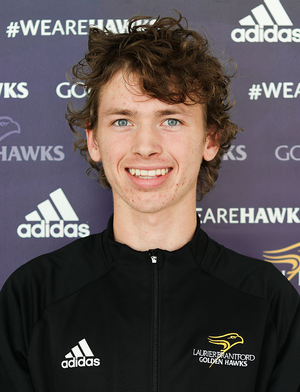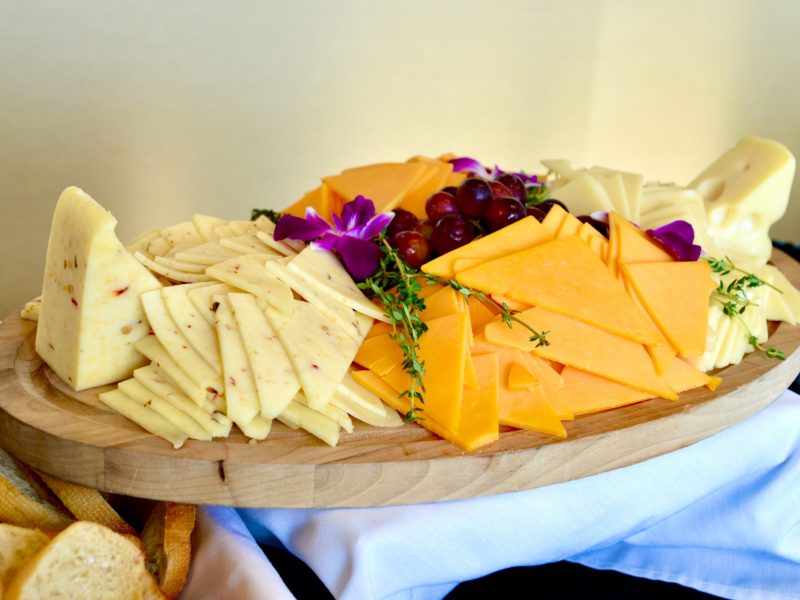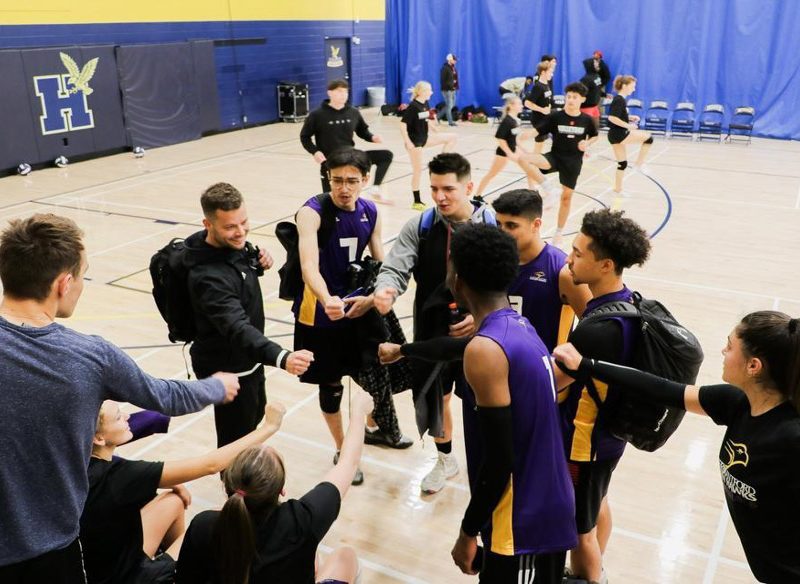I wanted this story to kick serious butt – in more ways than one.
When I heard Spring Break Serving Brantford had been cancelled, I started to question the belief that Laurier Brantford students are extremely socially-aware students, crusading to save the environment and protect marginalized groups. When I discovered the weekend version of the program had also been cancelled, my curiosity ballooned. As a Brantford native, it irritated me that for all the campaigns I saw promoting AIDS awareness and action against Darfur’s government and protesting the on-going genocide – two causes I believe strongly in – I didn’t see my fellow students helping our neighbours down the street. I wanted to write a piece full of numbers, statistics and quotes from distraught organizers; a piece that, to be honest, I could show to employers and say, “See, Mr. Editor-in-chief-of-large-or-not-so-large paper? I can type your obituaries!” (What can I say? This recession I keep talking about is getting to me.)
But like finding a job in this crazy news business, finding answers to my growing questions about social involvement on this campus wasn’t easy.
Measuring how many Laurier Brantford students volunteer, whether in WLUSU affiliated clubs or other campus organizations creates a number of questions. First, the numbers must be accurate; students involved in more than one organization cannot be counted more than once. But some questions are harder to answer; specifically, how to measure how much volunteering happens.
When asked if she believes Laurier Brantford students should be involved in more causes, current Project Empathy President Rachael Kumar cautioned, “The more [causes] we get involved in, the more we are spreading ourselves thin.”
Kumar stressed that the main goal of Project Empathy is to educate students and raise awareness.
“Numbers don’t really tell you much,” she said of attendance figures at events. The most important part is “the people who take what they learn” and become involved.
Getting students involved may be easier said than done. Stephanie Vanic, current president of the Laurier Brantford chapter of the Laurier chapter of STAND: Students Taking Action Now: Darfur, first became interested in the fight against genocide in April 2008, after hearing a lecture from a woman who spent time in the country researching the situation. Vanic strongly believed Laurier Brantford needed to be involved, partly because of the Human Rights program here and also because almost every university in Canada has a chapter of STAND. Professors supported the idea, and students were also enthusiastic on paper and Facebook. Clubs seeking recognition from WLUSU must send in names, signatures and contact information for at least 10 students. STAND sent in over 20, and as of March 22, their Facebook group boasts 61 members.
But according to Vanic, “finding members to be on the executive was like pulling teeth.” It took three months to assemble a team of five students, including Vanic.
“[We] have general members on paper, but there’s a difference between paper and actually coming out,” Vanic elaborated.
The club’s initial fundraiser, a Hollywood-themed party at Club NV, saw between 600 and 700 people attend, Vanic estimates. The club raised $1000, about 40 percent of which went to cover costs of the evening. Despite this response, attendance at the next event, a screening of the film “Darfur Now” in the Students’ Centre lounge saw minimal students attend. Vanic and her roommates were joined by Professor Andrew Robinson and a “few” other students.
According to Historical Movie Society President, Katie Hashimoto, low attendance hasn’t been isolated to a few clubs.
“Attendance has been down for pretty much every club,” Hashimoto said, referring to conversations she’s had with other club executives, after her club’s fourth annual dinner and a movie fundraiser for Why Not City Missions on March 13. Approximately 25 students, alumni and faculty attended the event. Most of the tickets were sold at the door, and arrivals were slow and staggered. (I myself sauntered in half an hour after the event was supposed to begin and the dinner still hadn’t started.) According to Hashimoto, “maybe ten” current Laurier students attended. She paused. “Not even.”
That’s not to say Laurier students don’t attend charity fundraisers. Over 100 people attended the Brantford Activities Team’s second annual fashion show, with all proceeds going to the Children Aid Society of Brant’s Child Development Unit. BAT members take the money and buy items on a “wish list” given to them from the Children Aid’s Society. Last year, they used the money to buy items like food for breakfast programs and toys.
But again, it wasn’t easy. According to BAT General Volunteer Laura Shermeto, who had the original idea for the annual event, most tickets were sold at the door.
“Everything we do here is last minute,” she explained. Shermeto added that this is not a new trend. It’s been like this at Laurier Brantford for years.
But trends in volunteerism appear elusive. Those interviewed identified a variety of causes where Laurier Brantford can become involved. Shermeto said that although the fashion show is currently BAT’s only involvement with the CAS, there are plans to increase involvement in the future. Relationships with this charity are somewhat easy, since partnership already exists between the Children’s Aid Society and the university, according to Lesley Robinson, a member of the board of directors who attended the event.
Kumar believes many Laurier students devote their time to numerous causes – they just aren’t recognized. She sees Laurier Brantford as having a culture of volunteerism, that it’s “almost like peer pressure” to get involved. Still, she thinks professors should do more to keep their students abreast of current events like the Palestinian-Israeli conflict in the Gaza Strip and conflict in Sri Lanka. These are “all wars that are going on right now,” Kumar said.
Vanic isn’t as convinced.
“Oh my God, where do I start?” she asked when beginning to list causes students can be more involved in. Despite her clear passion for Darfur, she strongly believes students should be more involved in local organizations. Vanic worked in Brantford last summer and spent many evenings walking around, taking pictures of the city, of the Grand River. She said most students come to Brantford, study and leave. But Vanic, who admits she didn’t start learning about Brantford until last year, said there’s “definitely a reason” for Laurier having a campus in Brantford.
“Students should change with the environment. You don’t just take something. You should give something back,” she said.
For her part, Vanic taught English as a Second Language to new immigrants. The placement, arranged through Community Service Learning, was a course requirement. She endorses Community Service Learning placements being required for some courses.
Hashimoto echoed these sentiments. Since the very beginning, the Historical Movie Society has always had close ties with Why Not City Missions. Their fundraisers have raised approximately $2700 over the past four years. Hashimoto said Laurier Brantford “couldn’t ever be 100 percent isolated from downtown … Some students make the most of that. Some students don’t care.”
With a noticeable absence of first-and-second year students in the Historical Movie Society, Hashimoto admitted she doesn’t know if the club will be able to continue next year.
“But if it doesn’t, then HMS isn’t needed on this campus.” She remained philosophical. “There’s a season for everything.”
No matter what happens next year, Hashimoto thinks the Historical Movie Society can inspire other students. The club began with a group of students who wanted to gather and discuss history.
“If you have a vision of something you want on our campus,” she said, “you can start it.”
Perhaps more interesting than attendance records is analyzing what events students attend, and how they relate to the causes. For her part, Vanic found it difficult to reconcile the images of devastation in Darfur with the glamorous party she organized to raise awareness about it. She said she was hesitant at first, thinking to herself, “I can’t justify throwing a fundraiser at a night club for something like this.” The focus of the night shifted from Darfur. Vanic said the executives only talked about Darfur for about twenty minutes. Sitting at her kitchen table weeks after the evening, she seemed somewhat discontent. Vanic said most students are inactive: it took “a poster with a thing of champagne and a half-naked Mariah Carey” to attract them to the event.
While attending the BAT fashion show, I was struck by the subtle irony of lovely women and men showcasing their bodies in clothes donated by stores in Brantford and Hamilton so children can eat breakfast before school. All this, with the Pussycat Doll’s reminiscing on how they wanted to be famous when they grew up, and Britney telling men to give her more one moment, and calling them womanizers the next. I started to wonder if there are more appropriate ways to ensure children eat well – especially when Lesley Robinson said she got involved with the Children’s Aid Society, in part, because she wanted to promote women and children’s rights.
But I’m an English major – we’re supposed to over-analyze everything into a study of gender relations.
Vanic admitted she was nervous to start STAND at first. But she doesn’t believe getting involved is really that complicated.
“It’s just a matter of getting off your butt and doing something,” she said.
There’s the challenge. As Kumar noted, students can’t be involved in everything, and for events that require donations, the current economic state poses significant problems.
Understood. Even as I type this, a list runs through my head about every person or organization I should have contacted: the quotes I didn’t get, the numbers I can’t provide. Blame it on technology, on “phantom clubs,” on term papers, laziness and lack of time. Whatever. Volunteering takes time, effort and yes, money.
But if one thing remains sure, it’s that it’s worth it. Vanic described volunteers as “needed” and “loved.”
Robinson encouraged students that they “will always get back more than they give.”
Kumar believes that for students passionate about learning and teaching others about HIV-AIDS, now is the best time to join Project Empathy.
Students looking for further proof only need to ask the youth served by Why Not City Missions. HMS members cooked enough spaghetti for 40 people, but when it became evident there would be abundant leftovers, they decided to give more than money.
“Instead of letting all that food go to waste, I went over to the drop-in centre,” Hashimoto said. She returned with Why Not staff and youth. The teenagers hadn’t eaten yet that night, and joined the Laurier community for dinner that night. This is what helping the community is all about.
There’s a lot more that Laurier Brantford students can do. And as one year ends and another will begin before we know it, perhaps we need to consider who we’re helping – and who we’re not; to wonder about how we can help people who live halfway across the world and ignore those who live across the street.



